Aloe rupestris
Aloe rupestris Baker
Family: Asphodelaceae
Common names: bottlebrush aloe, rock aloe (Eng); borselaalwyn, kraalaalwyn (Afr.); inhlaba (Siswati); uphondonde (isiXhosa); inkalane, uphondonde, umhlabanhazi (isiZulu),
Introduction
A handsome aloe with tightly packed yellow flowers that mature to an alluring scarlet or deep orange, forming beautiful, breathtaking, bottlebrush inflorescences in winter.
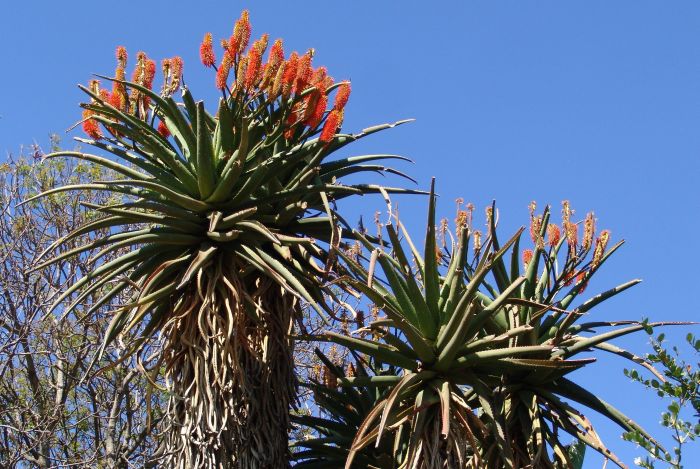
Description
Description
Aloe rupestris plants usually stand tall on single-stemmed trunks 4–6 m tall, but can reach heights of over 8 m, when the specimen grows in and amongst other shrubs that offer structural support. Smooth, dull green leaves are simple, lance-like, spreading to carried vertically where it somewhat droops towards the tips. The leaves are grooved to form a U-shape in cross section. Just below the rosette head of leaves will be a layer of dead leaves that remain on the plant for a long time. Leaf margins are lined with reddish brown, serrated teeth.

The candelabrum inflorescence grows above the rosette of leaves. Flower stems form from the growth point or at the base of leaves toward the top, and carry a branched inflorescence of up to 18 flat-topped, cylindrical flowerheads, each made up of many tightly packed yellow to brownish orange flowers that have bright reddish orange stamens protruding from the mouths. It flowers in late winter to early spring (Aug. –Sep.). The seed capsules split in three; seeds are ripe when the seed capsule dehisces (naturally opens to release seeds).
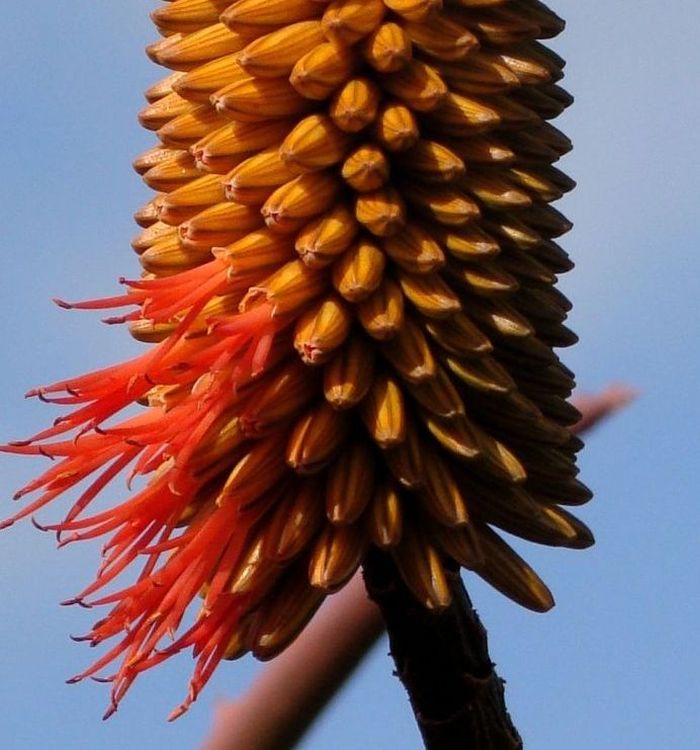
Conservation Status
Status
According to the Red List of South African plants website, this species is not threatened and is thus assessed as Least Concern (LC).

Distribution and habitat
Distribution description
Aloe rupestris is not endemic to South Africa, as it can also be found in Swaziland and southern Mozambique. In South Africa, it occurs naturally in the southeastern areas of KwaZulu-Natal. They are commonly found growing in rocky and hilly areas, on ridges and slopes, in bushveld, thicket and coastal sand forests, in frost-free areas. This region experiences hot, rainy summers and mild, frost-free, dry winters.
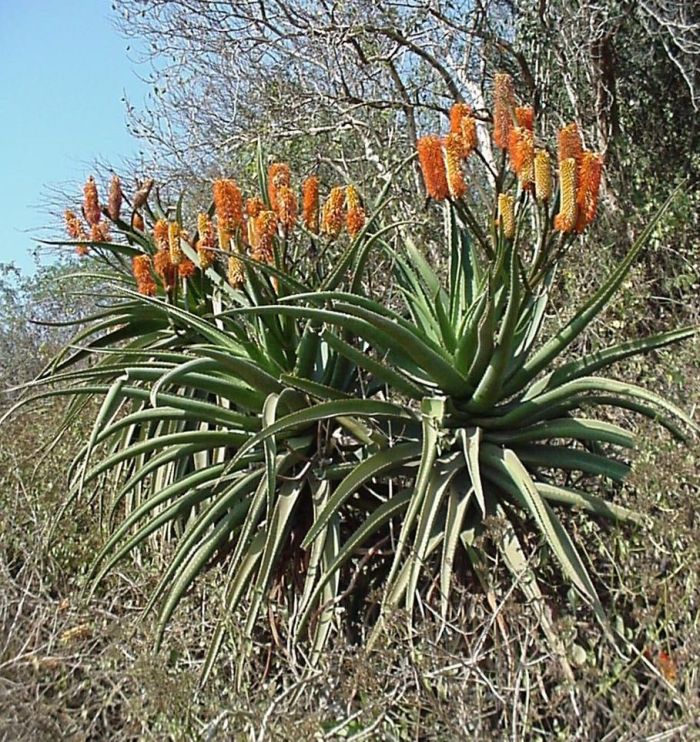
Derivation of name and historical aspects
History
The genus name is derived from the Greek aloe, which is derived from the earlier Semitic word alloeh, which translates to ‘bitter’, a reference to the bitter-tasting liquid or dried juice found in the leaves. The specific epithet rupestris means ‘growing in rocky places’, which refers to the habitat in which it naturally occurs.
Ecology
Ecology
The flowers attract nectar-loving birds, bees, butterflies and other insects, as well as insect-eating birds.
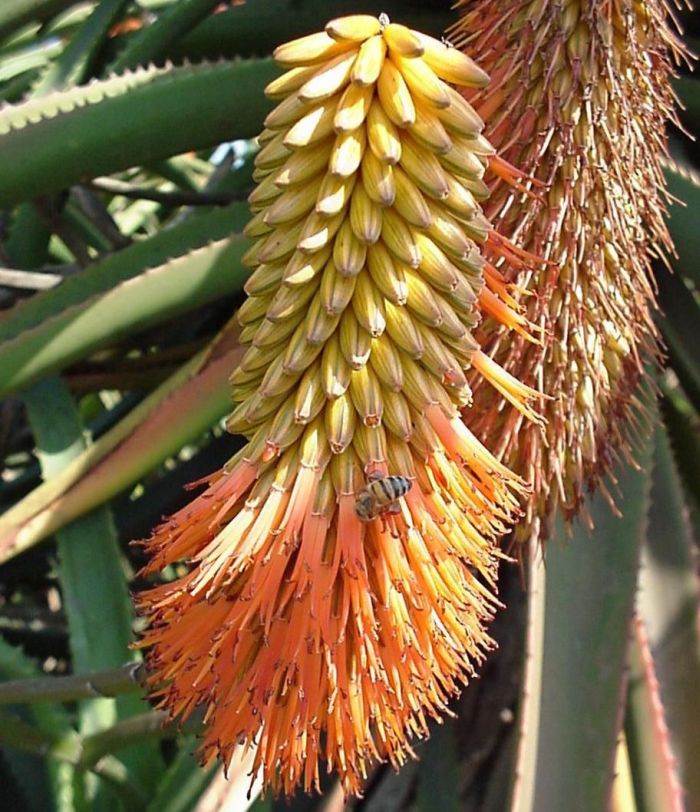
Uses
Use
Aloe rupestris is used in traditional medicine as a strengthening medicine, to treat painful menstruation and opthalmia.
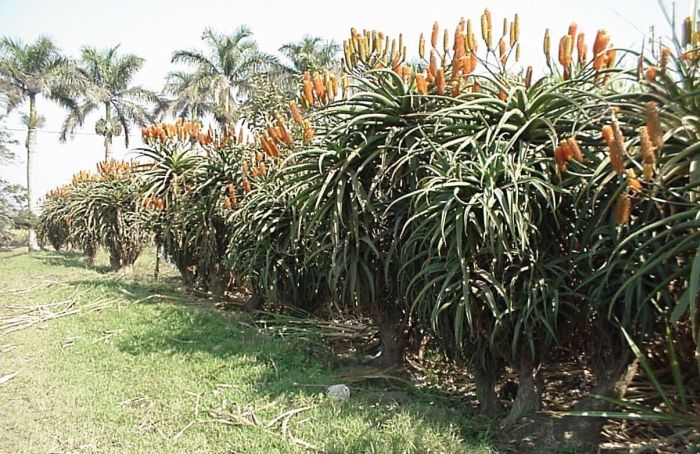
Horticulturally this is a sought-after plant for its beautiful bottlebrush flowers and its striking shape, that makes for a spectacular feature plant in any garden or rockery. They also make very effective hedges.

Growing Aloe rupestris
Grow
As with most single-headed aloes, this species does not produce suckers. Thus growing it by means of cuttings is not a viable option, unless the rosette head breaks off, leaving you with a head that can be rooted and a trunk that could resprout from a node to form a new rosette of leaves once more. Micropropagation is an option but special facilities will be required. The most successful and preferred method is by means of seed. Sow seeds in a medium with good drainage and that has a form of organic matter present. For best results sow in a medium having 1 part loam, 1 part river sand and 1 part fine sifted, well-rotted compost. Fill the seed tray with seedling mix, levelling the medium to ensure uniform growth, scatter seeds over the medium and cover them with a layer of soil to twice the depth of seed size. Place seeds in a well lit area and water well, ensure they are moist, but do not over water as to avoid pathogens that cause damping off. Seeds should be left to germinate and mature to the size where they can be transplanted into pots or straight into the garden. Aloe rupestris seedlings are very slow growing from seed to an established aloe and it will take a number of years before they are ready for the garden.
The most common pests are snout weevils, soft brown and white scale.
This aloe flourishes in hot weather and can withstand mild frost.
References
- Boon, R. 2010. Pooley's trees of eastern South Africa, a complete guide. Flora & Fauna Publications Trust, Durban.
- Clarke, H. & Charters, M. 2016. The illustrated dictionary of southern African plant names. Flora & Fauna Publications Trust, Jacana, Johannesburg.
- Hutchings, A., Scott, A.H., Lewis, G. & Cunningham, A.B. 1996. Zulu medicinal plants: an inventory. University of Natal Press, Pietermaritzburg.
- Palmer, E. & Pitman, N. 1972. Trees of southern Africa. Balkema, Cape Town.
- Smith, G.F., Crouch, N.R. & Figueiredo, E. 2017. Field guide to succulents in southern Africa. Struik Nature, Cape Town.
- Van Wyk, B. & Smith, G.F. 2014. Guide to the aloes of South Africa. Briza Publications, Pretoria.
Credits
Jermaine Christoffels
Kirstenbosch National Botanical Garden
January 2020
Images: Jermaine Christoffels, Geoff Nichols and Alice Notten
Plant Attributes:
Plant Type: Shrub, Succulent, Tree
SA Distribution: KwaZulu-Natal
Soil type: Sandy, Clay, Loam
Flowering season: Spring, Early Summer, Winter
PH:
Flower colour: Yellow, Orange
Aspect: Full Sun, Morning Sun (Semi Shade), Afternoon Sun (Semi Shade)
Gardening skill: Average
Special Features:
Horticultural zones










Rate this article
Article well written and informative
Rate this plant
Is this an interesting plant?
Login to add your Comment
Back to topNot registered yet? Click here to register.